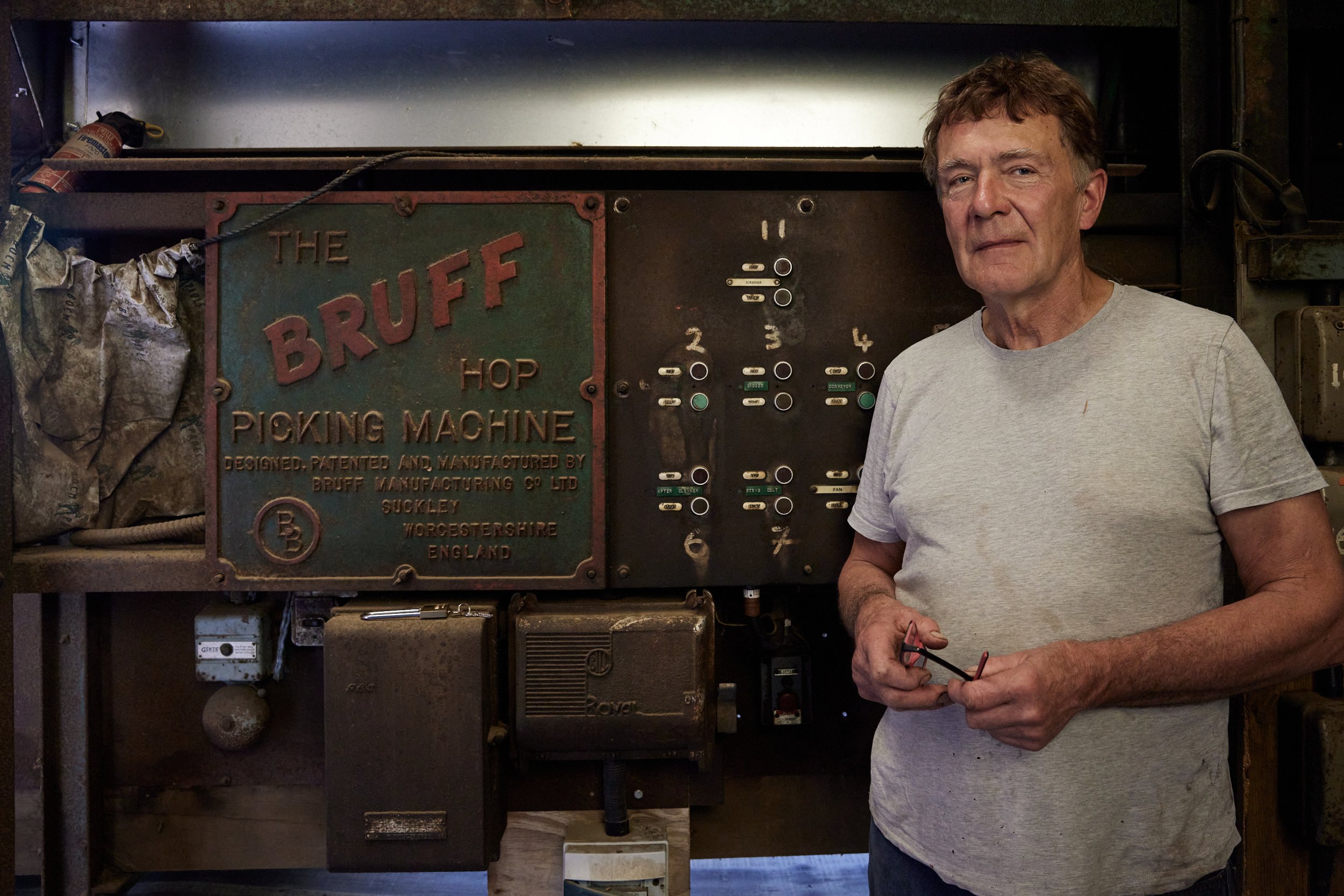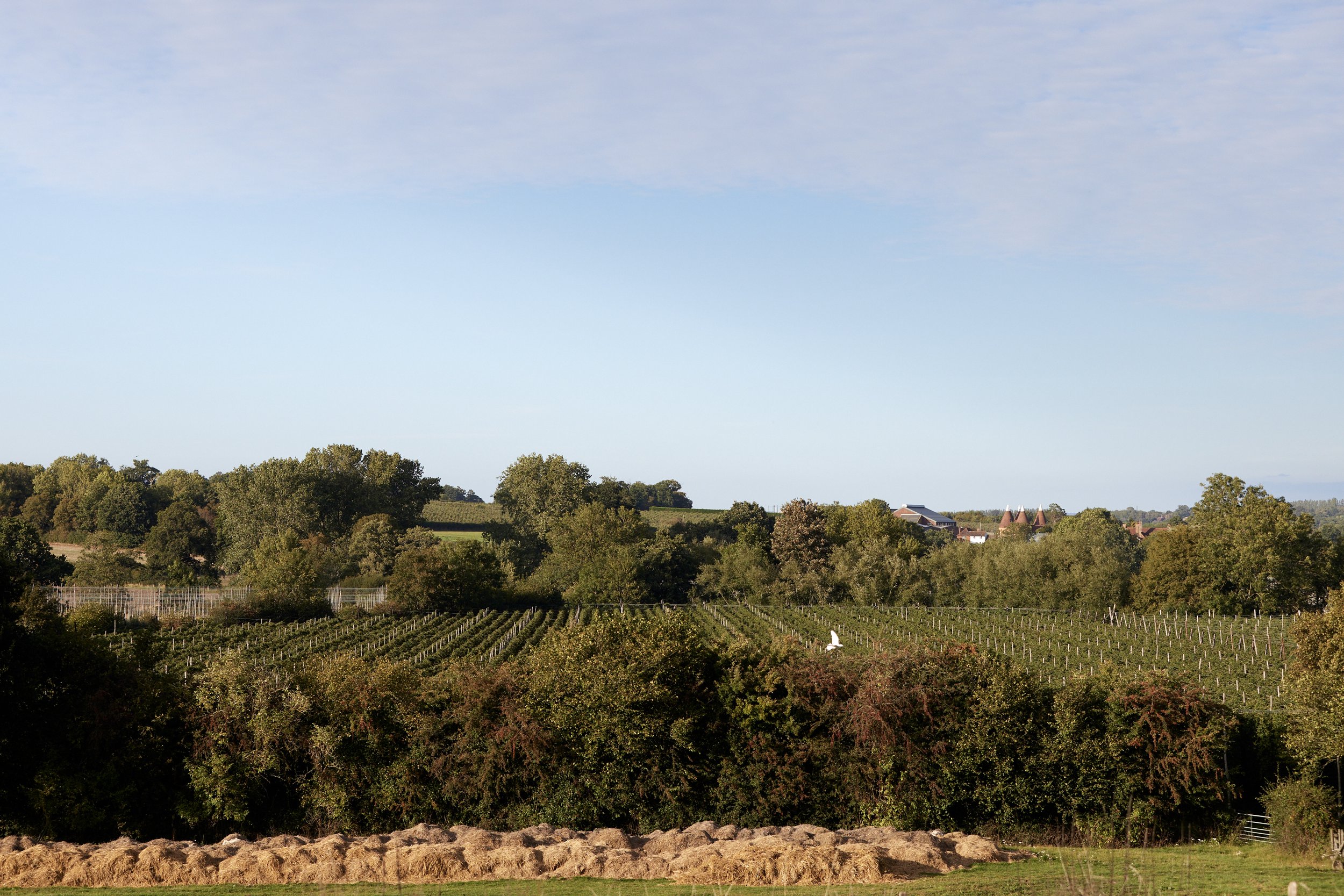Strang But True — The Incredible Story of #7, A Barely Known English Hop
It was 2018 and I’d just spent part of the year’s baking hot summer visiting family in Kent, in the southeastern corner of England. One afternoon, after a visit to Westerham Brewery—based near the village of the same name—my curiosity was piqued by a mini-cask of amber ale brewed using freshly picked ‘green’ hops from a local farm called Little Scotney. Little did I know at the time that, after tasting the beer, my understanding of what English hops could taste like would never be the same again.
Fast forward to May 2023 and I’m back in the South East for a short break. Once again I picked up some beers, this time a few bottles from Cellar Head Brewing Company in Flimwell, eager to see what this new, local brewery was all about. To my surprise, I noticed a very distinctive taste in its Amber that transported me back to that mini-cask from Westerham. Investigating the label, I see an unusual hop listed called Strangs #7, which awakened my curiosity once again. Given that the grower of the hop in the Westerham beer is called Ian Strang, and it was called Experimental Hop #7, I had to find out not only if it was the same one, but as much about it as I possibly could.
Photography by Will Shaddock
A self-described “redneck” farmer who has been growing hops at Little Scotney Farm since the early 1990’s, Ian Strang was a difficult man to track down. He hails from one valley over on the other side of the Scotney Castle Estate, where his family farmed and grew hops. These gentle valleys are the heart of the Kent Weald, an undulating landscape of farms and woods dotted with distinctive round oasts, hop drying kilns, that epitomise an area once known for its extensive hop gardens. The four roundels of the oasts at Little Scotney Farm, which is part of the 780 acre National Trust Scotney Castle Estate, date back to 1871 and are now thought to be the last remaining that are still in use for their original purpose for one month of the year.
***
Hops seem to get into your blood around these parts of Kent, with multiple generations involved keeping the tradition involved in their cultivation going. Not just the farmers, but all those who muck in and help with growing, and picking at harvest time.
Bill Barton has been helping to grow hops—“hoppin’” as he calls it—for over 40 years and says making the trips to Kent is “a way of life”. With a family history as part of the Traveller community, for Bill helping these crops grow are as interwoven as the bines that twist up the twine. With a crop that still requires more labour than most, the people who help grow and pick have over time created their own language that, like cockney rhyming slang, takes a little explaining to understand. So diverse and unique is the language used that the British Hop Association created a glossary.
Visiting a hop farm should come with a small translation book, which was needed as we walked around Little Scotney Farm with Ian. There’s “stringing” at the start of the year onto the wirework and the anchor in the ground, called a “peg”, using a long pole called a “monkey” before the rootstock starts to grow its shoots and climb. Then comes “twiddling” at first growth where the strongest shoots are trained onto the string.
During the growing season, before the hops develop their distinctive cones, they produce a flower called a “burr”. Harvesting before machines took to the fields or “gardens” as they’re known in Kent, where all the hops were picked by hand into long foldable canvas and wooden framed troughs known as “cribs”. The green undried hops were then transferred to “pokes”—sacks of loosely woven jute that could hold 8-10 bushels (1 bushel is about 36 litres). These would then be taken to the oasts where the hops are layered 1-2 feet deep over a slatted floor.
““Hops seem to get into your blood around these parts of Kent.””
The drying process uses a source of heat, originally from an open brick furnace using coal from a particular mine in Wales that contained low levels of toxic arsenic and antimony, so as to not poison drinkers. During those coal burning days sulphur was added to the fire, supposedly to improve the flavour and colour of the hops. This practice was outlawed twice, initially in 1721 and then again in 1795, but as mentioned in the 1847 published Rural Cyclopedia, “the practice, nevertheless, is done in the face of day, and beneath the nose of the minions of the law; and is almost as general throughout most of Kent and Sussex as the very process of drying.”
In Oast and Kiln History author Patrick Grattan notes using sulphur only halted in 1980, which shows how long these practices actually persisted.
Drying in the four oasts is hard work, handling the pokes from the end of the picking line to the roundels, with temperatures getting up to 65-71ºC (150-160ºF) inside. Their conical shape helps to create convection currents that pushes air through a thick layer of fresh hops to dry them, which in a modern oast is now assisted by fans.
The drying process in an old oast is still more of a dark art than science, as Ian explains. Knowing when they’re dry takes a lot of intuition based on years of experience and reading the conditions considering all the variables and quirks.
“One oast can take up to an hour longer to dry compared to the one next to it,” he says “Because of prevailing winds, or the way one oast can blow moisture into the next one.”
Eventually the dried hops would then be spread onto the cooling floor of the adjacent “stowage” barn using a large shallow wide shovel known as a “scuppet”. Ian explains that the cooling floor is too small to do this quickly, and that it’s a 3 person operation due to all the manual processes. Once cool, the cones are then pressed into “hop pockets”, woven sacks hung from the ceiling of the cooling floor that are about 6 feet in height, weighing 80-85kg when full.
Not much has changed at Little Scotney Farm where hops have been picked since the oasts were originally built in 1871. Ian now uses tractors to pull the bines down before taking it to a classic-but-loud Bruff picking machine, carefully kept in working condition by his brother Hugh. The days of open coal fires laced with sulphur have been replaced by diesel-fuelled heaters and a hydraulic press is used instead of a mechanical one. However, the spirit of the picking operation remains the same and little changes if it still works and can be repaired.
So steeped is Little Scotney Farm in the traditional ways of picking and drying hops that the last thing you would expect are experimental hop varieties with very different flavours to what traditional English hops are known for. In 2015, David Goodsel, who has been working on the farm since before Ian took over, noticed a group of seven different looking hops at the end of a row of Whitbread Goldings Variety (WGV). It’s not known how long they’d been growing in the ground, nor how they came into existence so beyond this. The story is lost to the mists in the valley of the River Bewl.
The plants, strong and vigorous growers, seemed relatively tolerant to drought, extreme heat and provided good yields. Buoyed by this, Ian had help from Alan Wickham—a local farmer with a long family history of hop growing—in propagating about 300 plants of each variety using leaf cuttings so that trial brews could be carried out at commercial scale.
With the help of Robert Wicks founder of Westerham Brewery, the hop resins and oils were analysed by Dr Peter Derby, the now-retired expert that led the British hop breeding programme. Whilst the numbers could be interpreted to mean many things on their potential pedigree and some commonalities were found with newer varieties, it didn’t shed any light on its origins.
After a couple of years growing the 7 varieties, the selection that stood out for brewers and Ian was #7. David Berry—at the time the head brewer at Cellar Head, now brewing at nearby Tonbridge Brewery—was also a keen advocate of #7. He quickly realised its potential to be used as “something different” for the fledgling brewery, which was established in 2017, so integrated it into their line up. The momentum picked up when the green hop version managed to win two awards in 2018—gold at the 2018 Kent Green Hop Beer Festival in Canterbury and silver at the Spa Valley Railway Ale & Cider Festival.
The taste of Strang’s #7 is like no other British hop I have experienced before. It has a kaleidoscope of flavours from pithy orange marmalade, tangerine, a touch herbal; dill, lemongrass, a hint of pear drops, sweet bubblegum and finally the “controversial” coconut note, similar to the one found in the Japanese Sorachi Ace and North American American Sabro varieties. (Sorachi Ace, however, has been cultivated in the American Pacific Northwest since 2006.)
It can divide opinion as soon as it comes up and is likened to the marmite or coriander debate—you either love it or hate it. Ian winced when I mentioned coconut, but considering it’s been described as smelling like Hawaiian Tropic sun cream I think it’s something that cannot be ignored.
““There are small domes of #7 plants that persevere, but these haven’t yet had the opportunity to establish themselves as a new and exciting variety.””
When I first tasted the Westerham green hop beer I remember a lot of bitter orange marmalade, piney resin and herbs. The recent single hop pale from Cellar Head is much more tropical, starting with some pear drop esters when first poured, but quickly developing pina colada aroma with a hint of tangerine and orange. The taste of a “tropical Kent cocktail,” which Ian and I thought was a good description of that first sip, bursting full of the distinctive sweet aroma followed by a lingering herbal flavour and bitterness to finish.
Like many other binary choices—love or hate this hop—there’s always more nuance when you look at something more closely. Is this mainly a reaction of the unfamiliar and unexplored rather than outright repulsion? Could it compliment spicier, more exotic and complex flavour combinations reminiscent of many cuisines that have found their way to our shores and dinner plates? Could this hop be part of the future of our evolving British pub and food culture? Can we embrace a bit more of the unknown and adapt our traditions within the comfort of the familiar?
So far #7 has been mainly used as a single hop in pale ales, but I’m curious how it would match with other hops. Could it complement or enhance other aromas or flavours? What would it be like in darker beers like a brown ale or porter? I imagine for many brewers, professional or amateur, this is where it gets interesting, where your imagination starts racing as you explore the unknown beyond those tried and trusted combinations whether that’s Citra and Mosaic or Goldings and Fuggles.
Good things, however, are often quite fragile. From the wildfires, heat domes and floods sweeping away parts of cities, to the human conflicts that have sent energy prices higher than ever thought possible. The development of this hop is part of that same rollercoaster we call Planet Earth. In 2019 there was an unseasonal storm in late August when the bines were at full height and the cones were developing. It brought with it a hop growers worst nightmare to the rows of #7 hops—strong winds.
The aged poles and pegs—made using wood from sweet chestnut trees—could not hold out with latticed wirework, heavy from a full harvest just weeks away, and abruptly collapsed. Ian managed to salvage some of the harvest, filling the oasts and picking shed with exotic aromas for the last time, but the rows of #7 haven’t been twiddled up strings ever since then. A swift recovery was hoped for and may have even happened but for the massive upheaval of the global pandemic that winter.
So where are we now? There are small domes of #7 plants that persevere, but these haven’t yet had the opportunity to establish themselves as a new and exciting variety. With so many characters involved in getting the hop this far, which in its DIY fashion might hark back to the way hops like Goldings and Fuggles originated, it will take more to allow it to thrive once again. One significant hurdle, yet to be solved, is the large investment required for the poles and wirework to be installed again. Another is a commitment from a group of brewers, professional or amateur, that want to explore this hop’s potential.
Ian explains how you need to think about investing in hops over 30 or 40 years, due to all the infrastructure needed to support their cultivation, and this is now becoming a liability for him. Maybe 30 years ago at the start of his farming tenure this wouldn’t have been such a difficult decision, but after the last few years he can’t afford this sort of risk. Strang is a tenant farmer with his landlord being the National Trust. The oasts are listed buildings, so decisions on using modern methods for picking and drying are more complicated and subject to many different priorities and policies that add confusion and delay.
There is one remaining brew of the final harvest, possibly called “The last of the Strangs” according to owner Chris Mckenzie, that Cellar Head will do as a tribute to a hop that made their brewery just that bit different. Will this be the end for this hop or will it one day rise and be twiddled again?










































